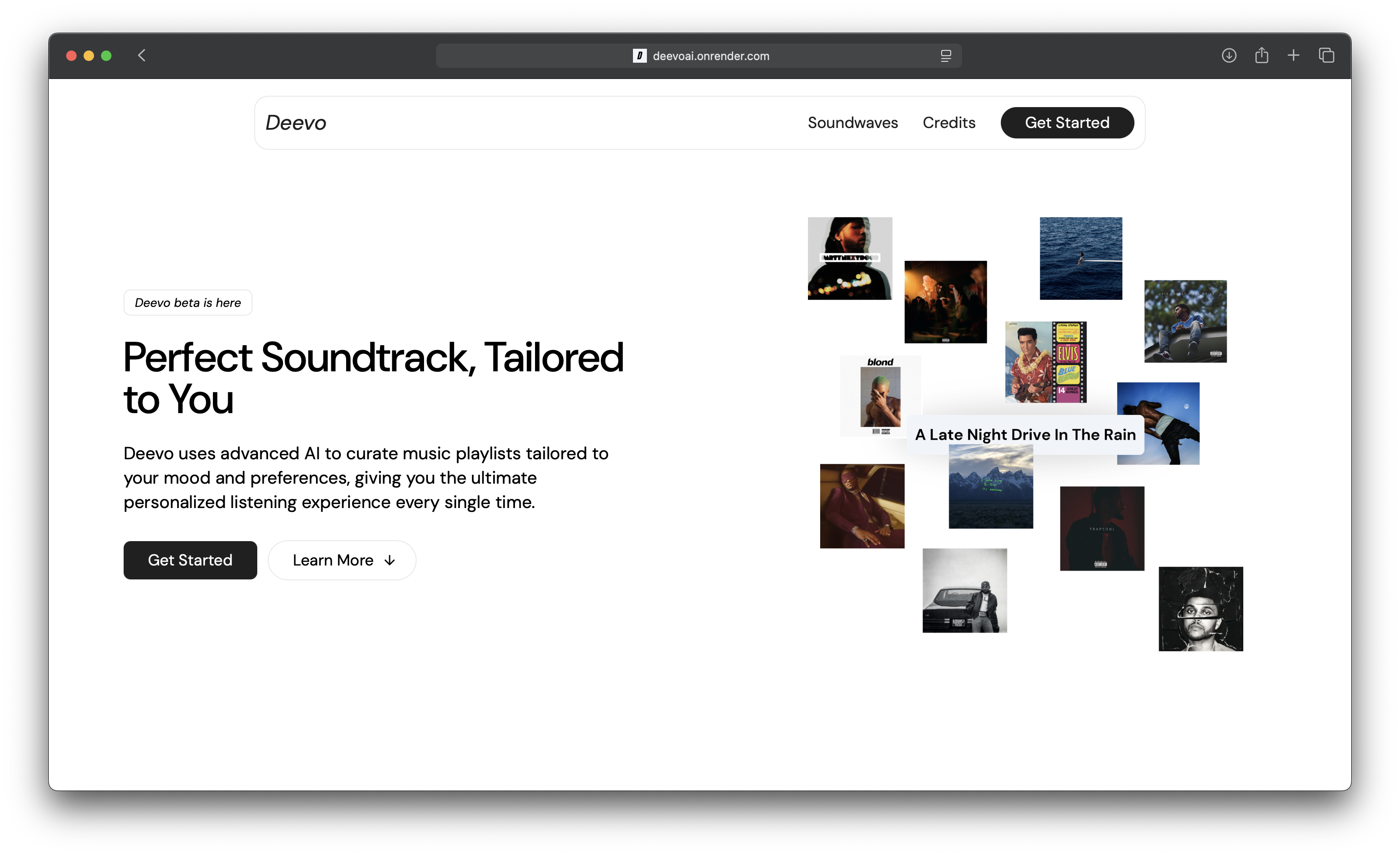
Music Discovery, Curated by AI
Role: Lead Developer & Designer
Timeline: October 2024 – February 2025
Tools: ReactJS, NodeJS, TailwindCSS, Google Gemini & Spotify APIs,
MongoDB, Express + more
Overview
Deevo is an AI-powered music platform that generates intelligent, personalized playlists based on user prompts. With a clean interface and one-click Spotify export, Deevo empowers users to discover music in a way that feels natural, creative, and deeply personal.
Goal
I built Deevo to scratch my own itch. I wanted a smarter, more intuitive way to find music that feels right.
Demo
The Inspiration
I was tired of skipping through half-hearted Spotify playlists.
I’ve always been the go-to music guy in my friend group—the one making playlists for late-night drives or pre-game hype. But when I wanted something new and specific, existing tools failed. I was either stuck typing vague keywords into Spotify or hoping Reddit had a thread for "lofi study jams with 80s synths".
That frustration sparked the idea:
What if you could just tell an app what vibe you're feeling—and it builds the perfect playlist?
How I Built It
What was supposed to be a weekend project turned into a full-fledged app that took months...
Frontend: Built with React + Tailwind CSS. I kept the UI minimal—soft colors, centered focus, and no distractions.
Backend: Built with NodeJS, Express, and MongoDB. I used the Spotify API to get the music data and the Google Gemini API to generate the playlists. Implemented custom authentication with JWT tokens and secure password hashing with bcrypt, plus Spotify OAuth to handle playlist exports.
This project taught me how to balance clean code with real-time API orchestration—without compromising on user experience.
Making AI Understand Music Vibes (Prompt Design)
Getting Deevo to return playlists that actually made sense wasn’t just about calling an API. I wrote pages and pages of prompt instructions—carefully crafting how genres should be mixed, how songs should be formatted, and how to avoid repetition. Each small change in phrasing could dramatically shift the results.
Eventually, I found a sweet spot between creative freedom and structured control—where the AI could surprise me but still stay on theme. I also built in fallback logic and auto-cleaning to handle weird outputs like “Track: Unknown.”
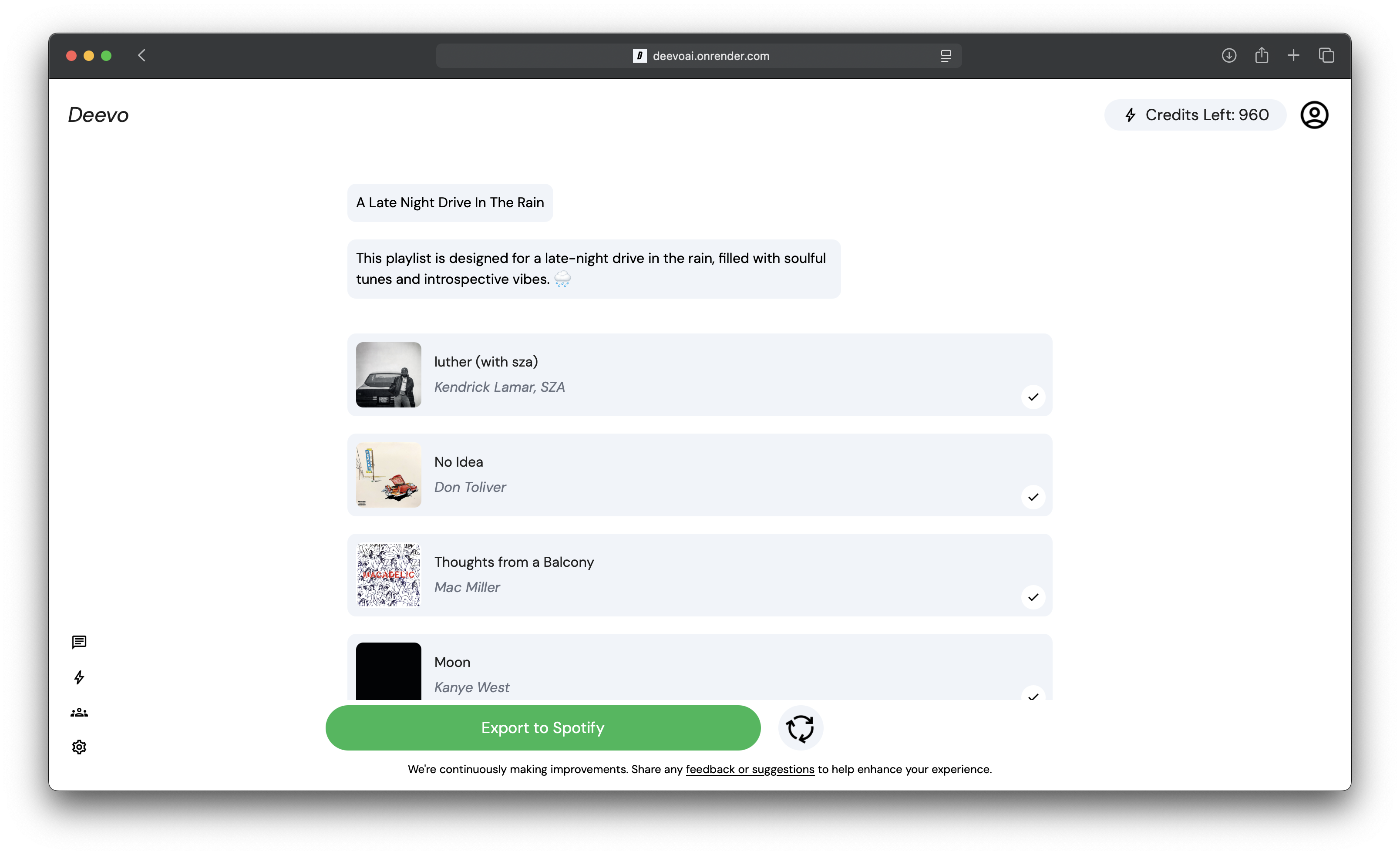
Example: API Integration
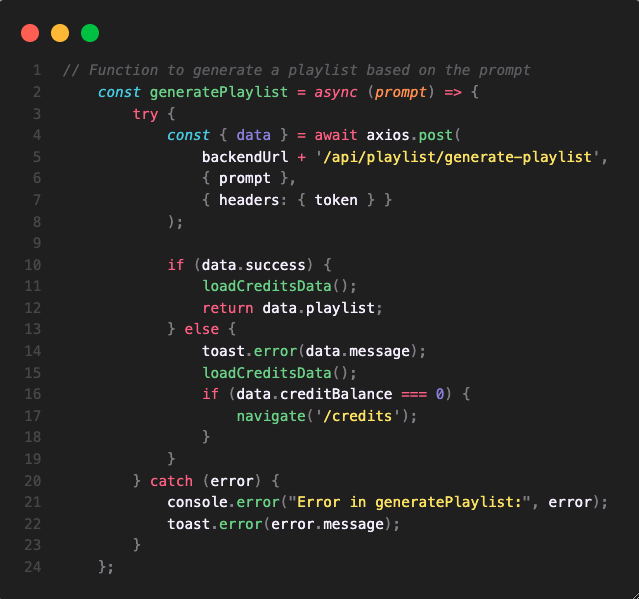
UI Design Philosophy
Deevo’s interface was designed to feel calm, intentional, and emotionally engaging. I avoided clutter, used soft contrasts, and centered the experience around the user’s imagination and emotional state. The entire app is also built with mobile in mind, so it's responsive and works on any device.
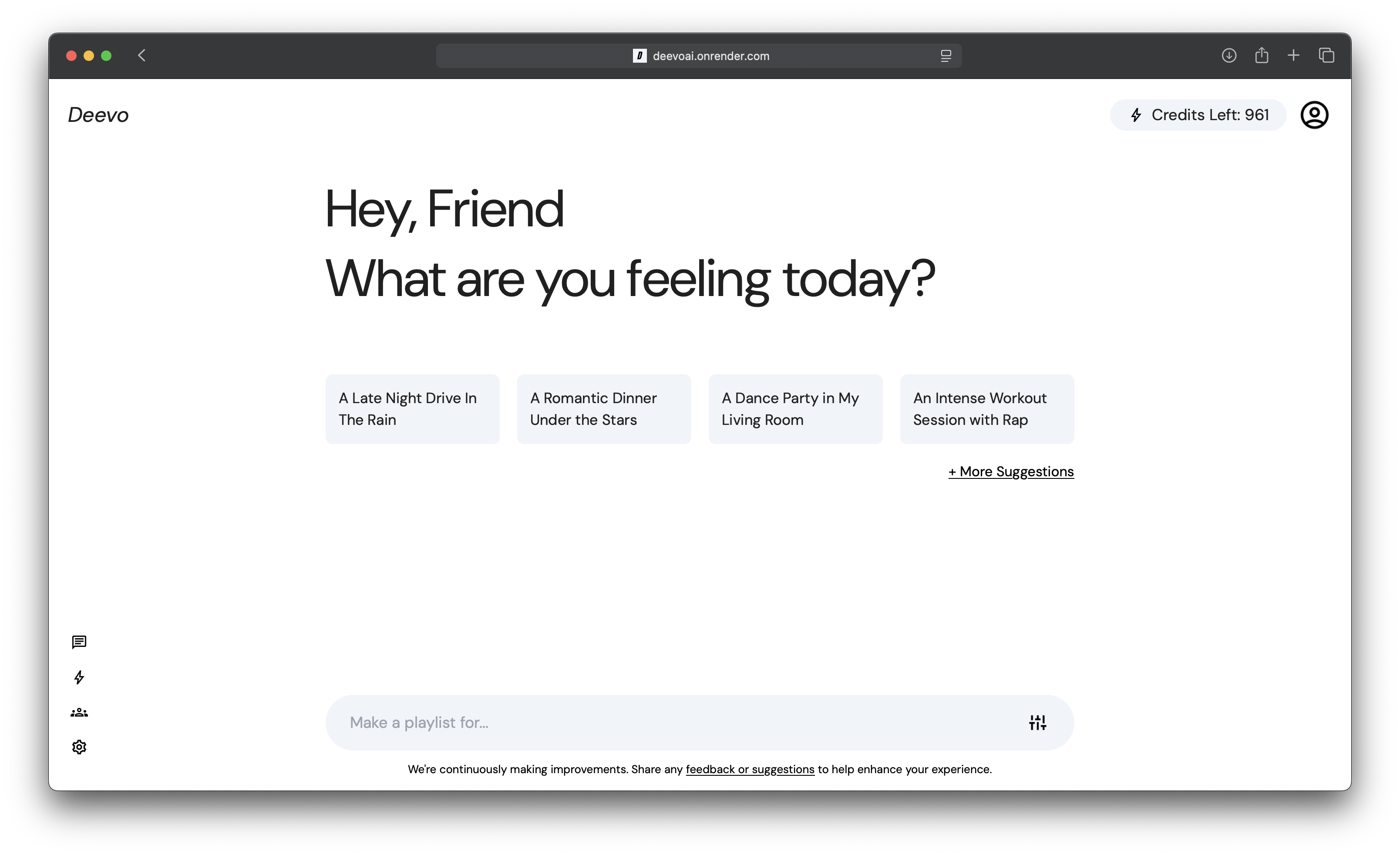
Prompt-to-Playlist Demo
The magic of Deevo happens when a user types a mood-based prompt and gets a full playlist in seconds. This section highlights the real-time responsiveness and delight of that interaction.
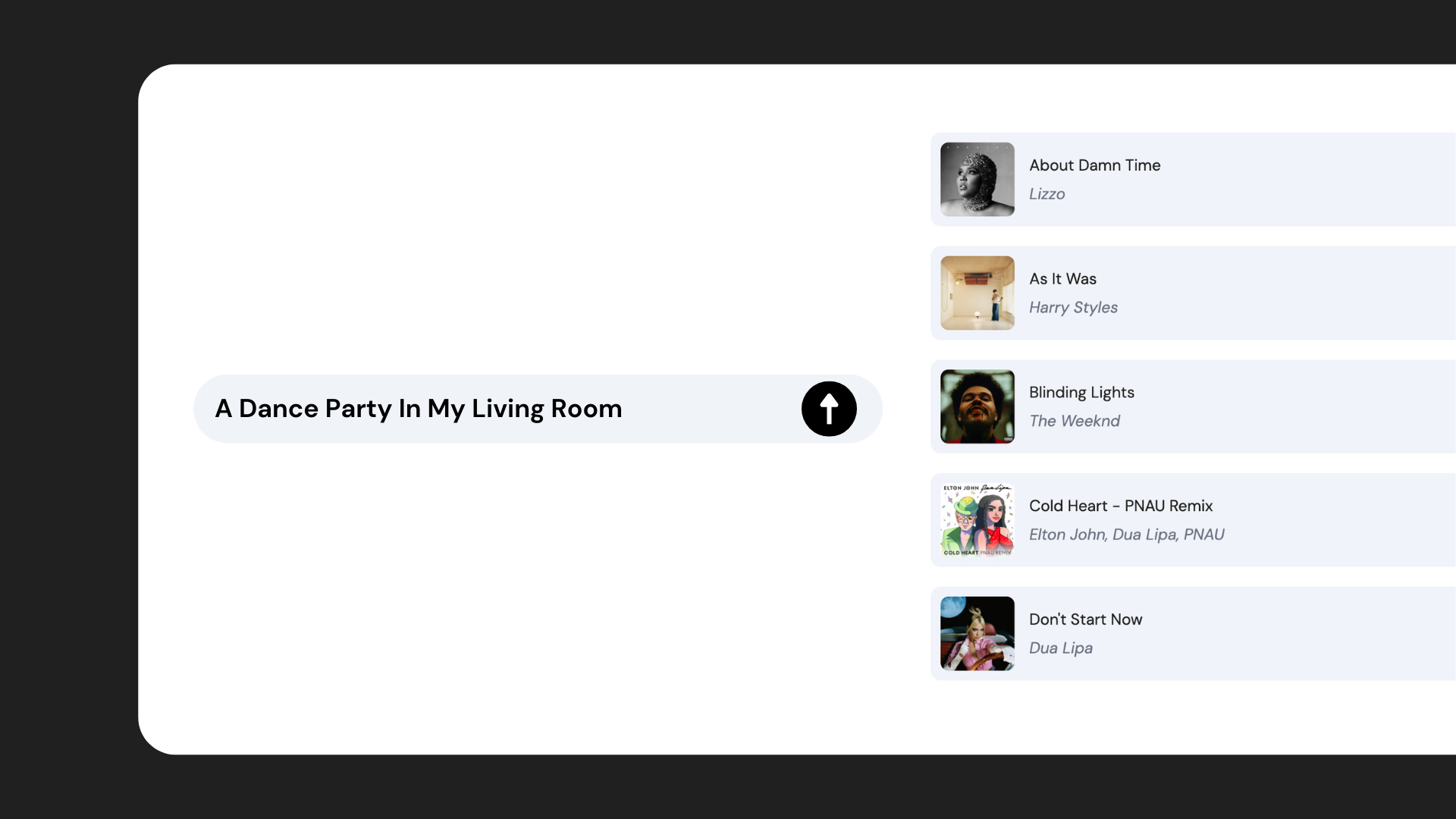
System Architecture
Deevo’s stack is built with modularity and performance in mind. The frontend and backend are fully decoupled, and all playlist generation and export flows are async with fallback logic.
What Worked & What Didn’t
Building Deevo was an iterative process full of small wins and valuable challenges. Here's what stood out:
- ✅ Worked: Seamless Spotify export felt magical to users.
- ✅ Worked: People loved the simplicity—just one box, and you’re done
- ✅ Worked: Prompt tuning with Gemini returned surprisingly emotional, relevant songs.
- ❌ Didn’t: Handling malformed AI responses required building post-processing logic.
- ❌ Didn’t: Spotify API rate limits forced some backend restructuring
- ❌ Didn’t: Prompt tuning was more art than science (spent hours testing subtle wording)
What’s Next
Deevo is far from finished—here are some features I plan to explore:
- Saved prompt/playlist history
- Prompt templates and curated AI-assisted suggestions
- Community playlist sharing + prompt-based discovery
- Audio analysis-based mood reclassification (using Spotify audio features)
Lessons Learned
- Prompt engineering is equal parts logic and creativity—writing for AI is its own skill.
- Designing for emotion matters—users remember how it made them feel more than how it worked.
- Full-stack projects require zooming in and out constantly—from database schema to typography.
- Shipping something imperfect still beats waiting for perfect—iteration beats hesitation.
Final Thoughts
Deevo reminded me why I love building: it combined technical depth, user empathy, and a creative problem space. This wasn’t just a full-stack build—it was a conversation between design, AI, and music.
I didn’t just code an app—I designed an experience that people could emotionally connect with.
Conclusion
Deevo started as a side project but evolved into one of the most rewarding things I’ve built. It brought together everything I care about—clean design, emotional resonance, and purposeful engineering.
If you're interested in how I built it, want to contribute, or just want to vibe to a new playlist